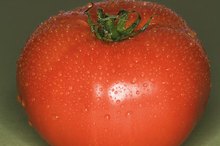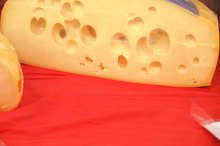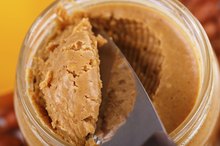Shellfish and Wine Allergies
If you recently enjoyed a seafood dinner featuring shellfish and then you got sick – chances are it was not food poisoning.
If you are experiencing serious medical symptoms, seek emergency treatment immediately.
However, if you are allergic to wine, your body is more likely to be responding to an ingredient in the wine, thus meaning it is not a “true” allergy 2.
An allergic response to shellfish is potentially deadly, meaning you need to avoid it. If your response to an ingredient in a glass of wine makes you uncomfortable, avoiding that may be the best strategy as well.
Reflex, Not Allergy
After drinking a glass of white wine, red wine or a zinfandel, some people complain of allergic reactions – flushed face, headache and a runny nose. This may not be a true allergy, according to Dr. Brian Vickery, instructor at the department of Pediatric Allergy and Immunology at Duke University, as reported by ABC Health News.
The wine itself does not cause the reaction. Instead, an ingredient in the wine is the culprit.
Dr. N. Franklin Adkinson, of the Johns Hopkins Asthma and Allergy Center, as quoted by ABC Health News, describes the reaction as a reflex.
Diagnosed asthmatics are especially sensitive to an added ingredient in a bottle of wine – sulfites. This substance sets up an irritating reaction in the respiratory system of an asthmatic.
- After drinking a glass of white wine, red wine or a zinfandel, some people complain of allergic reactions – flushed face, headache and a runny nose.
- Diagnosed asthmatics are especially sensitive to an added ingredient in a bottle of wine – sulfites.
Wine's Ingredients
Tamarind Spice Allergy
Learn More
Sulfite is an added ingredient in wine, and it is used to keep wine from becoming an undrinkable vinegar. Histamines are also present in wine, and they are believed to be the “leading cause” of wine reactions.
A bottle of red wine is more likely to contain histamines, but only in low levels 2.
Individuals allergic to eggs should also know that wine is processed using egg whites as it is filtered, writes the ABC News Health website 12. Histamines are not allergens – they are the body’s reaction to allergens 2.
- Sulfite is an added ingredient in wine, and it is used to keep wine from becoming an undrinkable vinegar.
- Histamines are also present in wine, and they are believed to be the “leading cause” of wine reactions.
Link to Dried Fruit Allergy
Sulfur dioxide has been used in wine processing since the 15th century, states the HealthCentral website. Wine traders typically burned sulfur candles in wine barrels before adding fresh wine to the barrels; sulfur dioxide is a natural byproduct of wine yeast in small quantities.
Sulfur dioxide contains antibacterial properties, stopping the growth of both yeast and bacteria. This compound is also found in dried fruits and shellfish.
Test your body’s reaction to sulfites by opening a bag of dried apricots.
- Sulfur dioxide has been used in wine processing since the 15th century, states the HealthCentral website.
- Wine traders typically burned sulfur candles in wine barrels before adding fresh wine to the barrels; sulfur dioxide is a natural byproduct of wine yeast in small quantities.
Shellfish Allergy
Pear Cider & Allergies
Learn More
Shellfish allergy can develop to only specific types of shellfish – or it can be across the spectrum, from octopus and squid to shrimp, writes Mayo Clinic. You may also react to crab and lobster. Different types of shellfish have different proteins causing allergic reactions.
If you have an allergy to shellfish, you may break out in hives; develop gastrointestinal upset; have a stuffed nose; you may develop a more serious, life-threatening allergic reaction.
- Shellfish allergy can develop to only specific types of shellfish – or it can be across the spectrum, from octopus and squid to shrimp, writes Mayo Clinic.
Symptoms
If you have eaten shellfish, you may notice symptoms within moments of eating it.
If you are severely allergic to shellfish, your reactions can be life-threatening.
This reaction, called anaphylaxis, can interfere with your breathing and requires emergency medical treatment and an epinephrine injection.
You must be seen by emergency department doctors to ensure you don’t develop a repeat reaction after receiving an emergency injection. Anaphylaxis symptoms are a rapid drop in blood pressure; shock; dizziness, fainting or lightheadedness; airway constriction making it difficult to breathe.
- If you have eaten shellfish, you may notice symptoms within moments of eating it.
Causes
Because your body responds too strongly to some substances, you develop allergies. This is also true of shellfish allergies – your immune system produces antibodies to some shellfish proteins after you have enjoyed a meal of crab legs, shrimp cocktail or lobster. While you may not have a noticeable reaction this time, that may not be the case the next time you enjoy a meal featuring shellfish 2. On that occasion, your body reacts even more strongly, leading to a wide range of symptoms up to and including anaphylactic shock.
- Because your body responds too strongly to some substances, you develop allergies.
- While you may not have a noticeable reaction this time, that may not be the case the next time you enjoy a meal featuring shellfish 2.
Prevention
Avoid shellfish – all varieties or only the type to which you are allergic. Even trace amounts can make you very sick. If you eat at a restaurant that serves shellfish, ask the wait staff if shellfish is prepared using the same kitchen utensils.
Read food labels when you are shopping. Look for indications on labeling that states the item contains shellfish.
Cross-contamination can happen if you buy an item that is displayed alongside shellfish. If you are severely allergic, stay away from all environments where shellfish is prepared, processed or cooked, advises Mayo Clinic.
- Avoid shellfish – all varieties or only the type to which you are allergic.
- Cross-contamination can happen if you buy an item that is displayed alongside shellfish.
Related Articles
References
- ABC News Health; This Wine is Making Me Feel . . . Sneezy; Lauren Cox; September 2008
- Health Central; Wine Makes a Teen Sneeze, But it May Not Be Allergies; Sloane Miller
- Wine, table, red. U.S. Department of Agriculture. Published April 1, 2019.
- Wine, table, white. U.S. Department of Agriculture. Published April 1, 2019.
- Snopek L, Mlcek J, Sochorova L, et al. Contribution of Red Wine Consumption to Human Health Protection. Molecules. 2018;23(7):1684. Published 2018 Jul 11. doi:10.3390/molecules23071684
- Wine and heart health. National Library of Medicine. Updated January 6, 2020.
- Wine and beer may make your lungs and sinuses worse. American Academy of Asthma, Allergy, & Immunology. Published September 1, 2014.
Writer Bio
Genevieve Van Wyden began writing in 2007. She has written for “Tu Revista Latina” and owns three blogs. She has worked as a CPS social worker, gaining experience in the mental-health system. Van Wyden earned her Bachelor of Arts in journalism from New Mexico State University in 2006.









